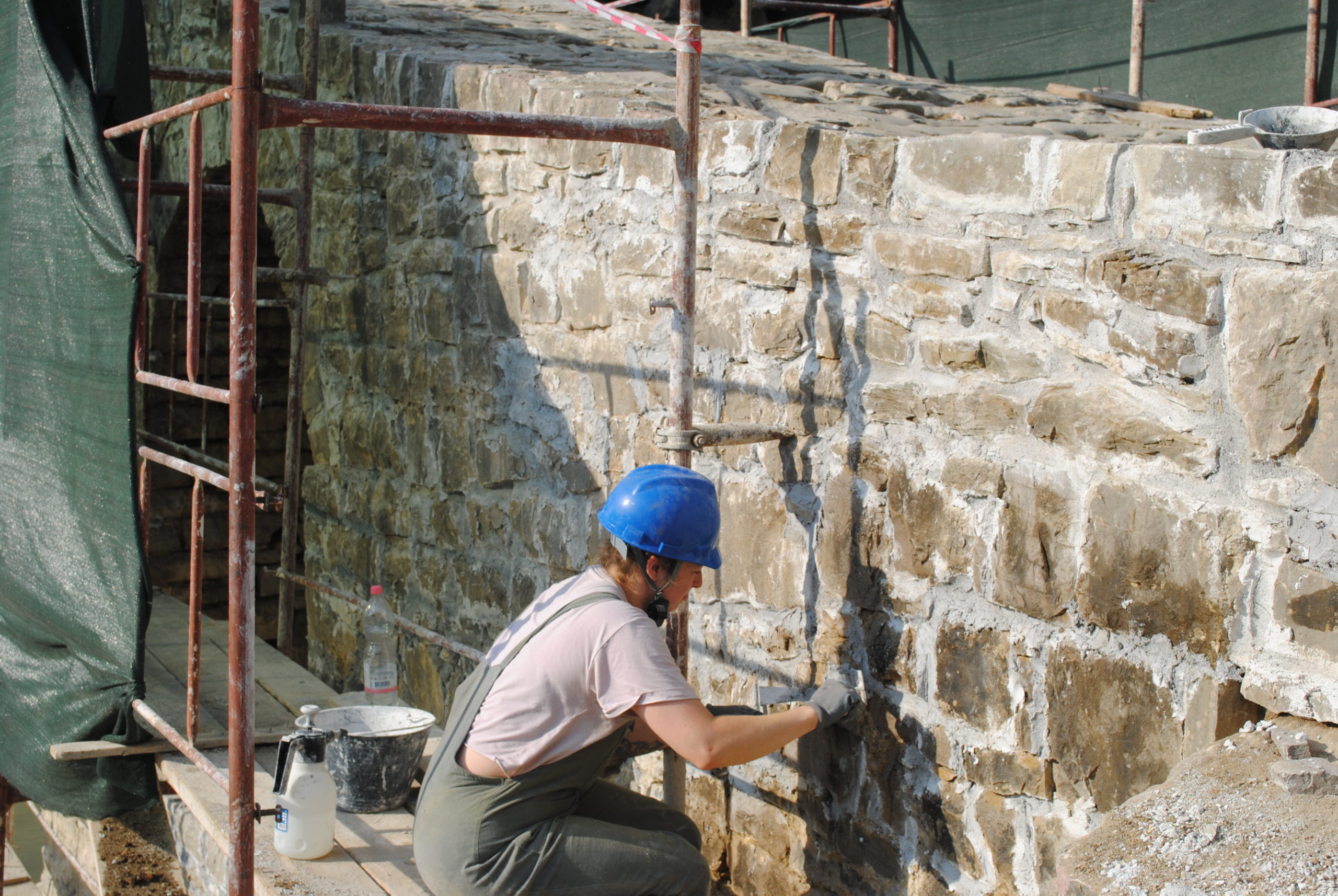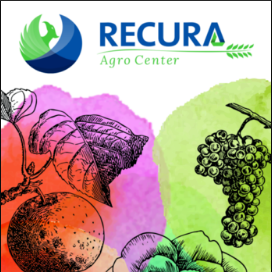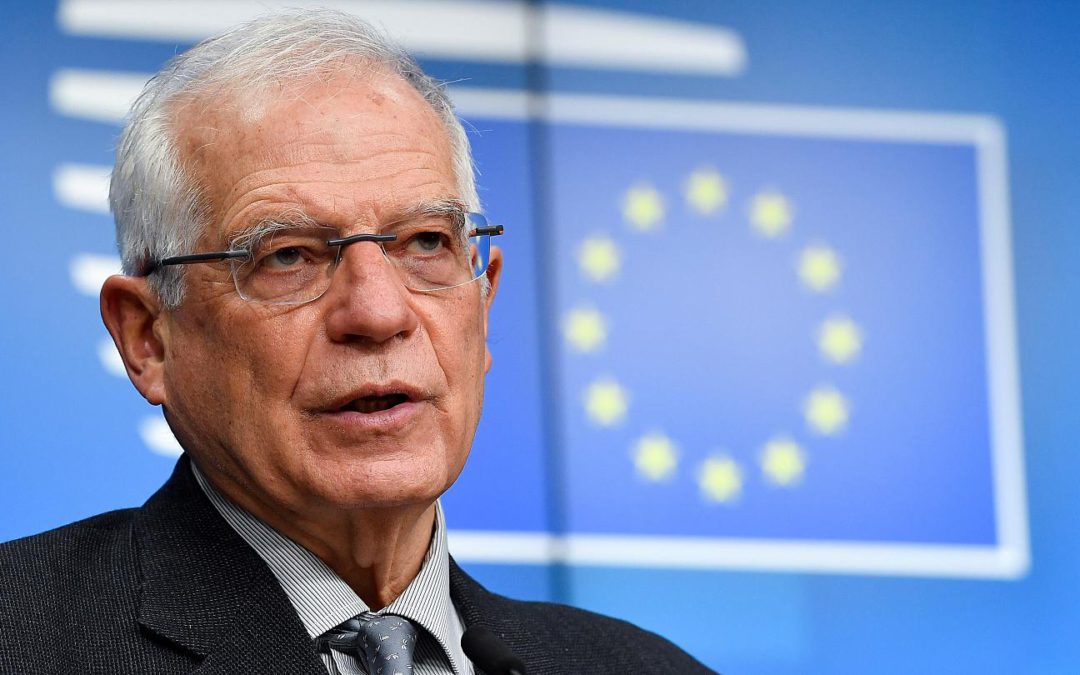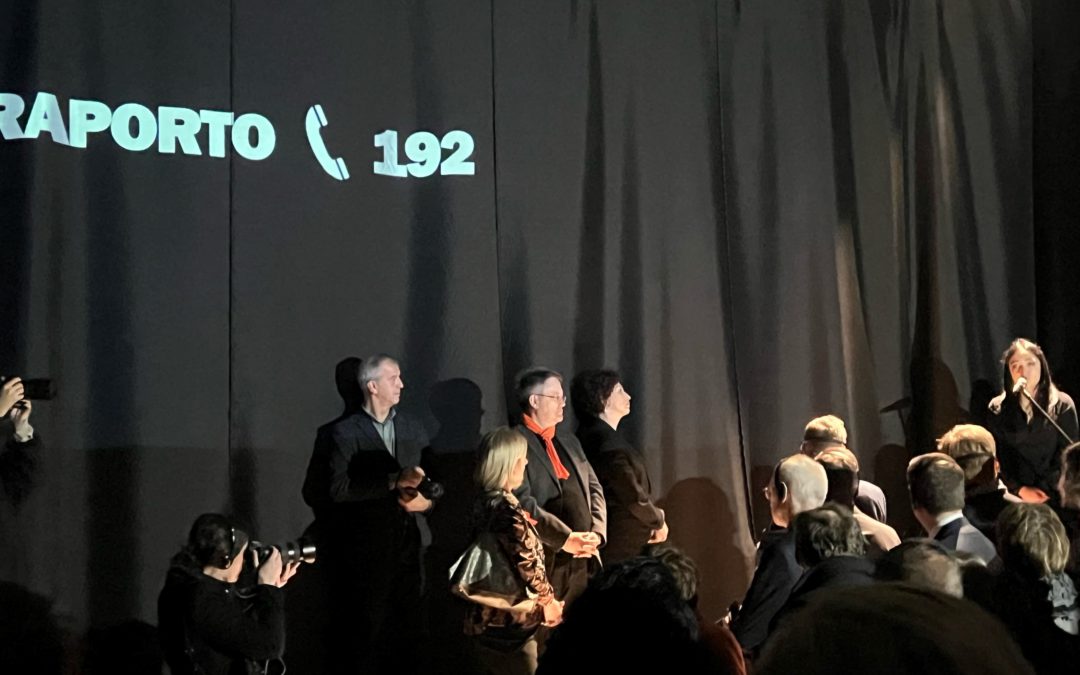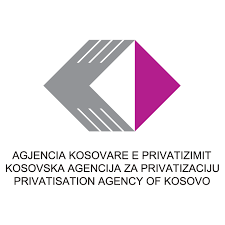Skender Boshtrakaj looked slightly frazzled as he made his way from the Museum of Kosova to the Ethnological Museum. It was a hot day, and sweat was dripping down his gray beard and long ponytail. He went straight to the spigot in the courtyard of the old houses to splash some water on his face, and he took a few minutes to collect his thoughts after sitting down.
As the director of Prishtina’s museums, Boshtrakaj stays busy. Between drawing plans for the museums and meeting with employees, he squeezes in time to meet with student groups and other tourists. He has been director for just two months, but he is already full of ideas.
Boshtrakaj manages four facilities in his position, including the Ethnological Museum, the Archaeological Park and the Independence House. Old Ottoman homes full of traditional Kosovar clothing and household items comprise the Ethnological Museum; the Archaeological Park is a small, shady park full of ancient artifacts; and the Independence House is the institutional name for Ibrahim Rugova’s house, which now documents Kosovo during the 1990s on its way to independence.
The primary and largest museum in the complex is the Museum of Kosova. However, it has been closed for renovation since the beginning of Boshtrakaj’s time as director. As he wrestles with planning and funding these physical renovations, Boshtrakaj is attempting to make the museums more relevant to the people of Kosovo.
“When we prepare these facilities physically, then we should rethink our presentations of the collections in general, aiming to create as much as we can some interactive programming and not just showing artifacts and giving some basic information about them,” said Boshtrakaj. “So as much as we can, we should interact with the public; ask them, challenge them, give them the space to do something, recreate something. I’m sure that we will go in that direction.”
He is also working on clearly defining the museum’s mission, and he sees it with three groups in mind: kids and youth; academia, including students, professors and researchers; and tourists and other visitors.
Perhaps Boshtrakaj’s biggest passion is educating the young. Though he has been Museum Director for only two months, Boshtrakaj has been working with the Ministry of Culture, Youth and Sport since the war ended.
“I decided somehow to devote part of my time, part of my energy and my life to institutional building,” said Boshtrakaj. “From the first day, I didn’t feel as if I were looking for a job or being employed. No, I’m devoting 100 percent of who I am and what I know to what I do.”
He started this work with youth program and youth policy development in the Ministry of Culture, Youth and Sport in 2000, and he was in this position until 2005.
Now, Boshtrakaj wants to start educational programs at the museum to better attract and engage students. He believes that the presentation of history is a crucial part of keeping youth engaged in society.
“The disconnection among young generation and their heritage in general comes from the wrong interpretation of the past,” said Boshtrakaj. “Now, you cannot give wrong information to this generation because they are surrounded with millions of sources. So, as much as we can, we should open to them, offer what we have and allow them to interpret and to make their stories on their own. And I say if we lie to them—they might listen to us—but they will not trust and we will lose them, I’m afraid, forever.”
Boshtrakaj wants to stop focusing on event to event and instead create sustainable, continuing programs that will continue to engage visitors.
One example was the program “ABC for Cultural Heritage.” This museum program was set up with SOS Children’s Villages International in Kosovo. It was a simulation of an archaeological excavation, and children from SOS were able to search for pieces of artifacts and then put them together.
“They are forced to negotiate, to convince each other and sometimes they fight, they argue, they complain, they justify,” said Boshtrakaj of the program. “It’s not to make or to train young archaeologists, it’s more to fill usefully their time, to challenge them and to create ground where these social interactions are happening.”
Programs like these reinforce Boshtrakaj’s idea of using cultural heritage as a tool for learning. Through cultural heritage, young people can learn how to act, interact, cooperate, understand one another and accept and deal with cultural differences, explained Boshtrakaj.
“Heritage is not just about artifacts, buildings or sites—it’s about the relations between generations,” said Boshtrakaj. “So inheriting something means a relation from one generation to another generation, from a group of human beings to another group, from one person to another person.”
The next group Boshtrakaj wants to focus on is academia. While students or researchers can request to view documents or artifacts, it can be a long process of asking and waiting for permission. With more and better laboratories and other facilities, students and researchers could come and go as they please to work with the museum’s collection, including scanning documents or studying artifacts. Boshtrakaj hopes the students will want to give back and help him create an e-library of museum documents.
Finally, Boshtrakaj wants to make the museums a better environment for visitors of all kinds. Museum of Kosova should be a place for Kosovars, visitors from the region and visitors from around the world to learn about Kosovar history and culture.
In order to improve the usefulness of the museum as a learning experience for visitors, Boshtrakaj thinks Museum of Kosova as well as museums all across the Balkans need to increase mobility of exhibitions, experts and audiences. That is, exhibitions and artifacts should be moved from museum to museum on tours, experts in the artifacts or restorations should work across multiple museums and each museum should advertise others to their visitors.
One major hindrance is the conflict between Museum of Kosova and the museum in Belgrade.
“This archaeological and ethnological collection was taken from this museum to Belgrade,” explained Boshtrakaj. “It was documented and it was taken to be exhibited there. So, it’s not a stolen treasure—but it was taken to be exhibited and never returned.”
Boshtrakaj does not mind sharing exhibitions between museums, but he believes that Museum of Kosova is the rightful owner of those items.
“If you ask me to whom these artifacts belong—do they belong to Serbs? To Albanians? To Serbia? To Kosova?—I have the courage to say they do not belong to us. They do not belong to them. They belong here,” said Boshtrakaj. “Museum of Kosova is the owner and is the responsible institution to take care of them. So, if I ask to have them here, it’s not because of their ethnic belonging but it’s about the institution responsible to take care of them and present them to the public. They are not ours, they are not theirs—they are artifacts of this institution here.”
Political strife between the two cities has fueled this administrative issue between the museums, an issue that has no place in political or even ethnic realms.
“In general, the history and the past is wrongly affecting our today life and the future perspectives,” said Boshtrakaj. “It’s unbelievable how much of the historical re-callings are taking place still in Balkans, and this is becoming a dangerous game now.”
As Boshtrakaj works on redefining the museums’ mission, he must also cope with the demands of physically renovating the facilities. There was a lot of talking and dreaming of the Museum of Kosovo renovation long before it began. According to Zana Llonçari, Head of Division for Integrated Conservation with the Ministry of Culture, Youth and Sport, those involved in cultural heritage and preservation in Prishtina wanted to modernize the museum and give it new functions of air and temperature regulation in order to better preserve the artifacts. The budget got in the way of many of their dreams.
The money for the museum’s renovation is coming solely from the Ministry of Culture, Youth and Sport. While the budget is adequate for the necessities, it leaves many desiring more. The budget is 240,000 euros for the first phase of the project.
“We have enough money to make a correct museum, but not to make a museum of the 21st century,” said Boshtrakaj.
Boshtrakaj’s main concern for the renovation is making the museum strong enough to last for multiple generations. He plans on contacting organizations such as the Smithsonian Institute or the Japanese Embassy to develop partnerships for more resources and mentorship to improve the museum.
Currently, renovation is only happening on the outside of the museum. A large metal scaffolding stands directly in front of the museum for painters and construction workers. The gates of the museum are typically closed, but museum employees, contractors from NBT – ING and occasional curious visitors traverse in and out on a daily basis.
According to Ardiana Morina, Assistant Museum Director, interior work is due to begin in about one month. In the meantime, the roof will be repaired and the faded yellow façade will be re-painted.
“There’s a lot of work on the inside,” said Morina, “So the outside is almost done, but the most difficult part is in here.”
Still, there are a lot of plans for the interior of the museum. The doors and windows will be updated with better material close to the original, said Boshtrakaj. The lighting of the museum will be re-designed to be more modern and durable. Boshtrakaj also wants to improve the conditions of the museum store and the laboratories.
“And I have one hot potato,” said Boshtrakaj, “which is the natural collection of the museum. There are a few thousand pieces of birds, animals, different species found in Kosova, both flora and fauna, and they are not in good condition.”
Boshtrakaj wants to find a new space to create a natural museum for the thousands of species, some extinct, in the collection. But the museums and government buildings are out of spaces, and the home for the collection must be well secured to keep everything intact.
But one of the biggest projects for the renovation is installing an elevator. Many logistical challenges have come from trying to place an elevator in the old building, but Boshtrakaj is determined to have it. He has felt guilt at how inaccessible the museum was for physically disabled patrons.
“When they enter into the museum and we ask them to look at the heritage with dignity, we should show first of all human dignity to these people,” said Boshtrakaj.
Boshtrakaj said there are enough inaccessible buildings in Kosovo—the museum should not be one of them. With piles of sketches across a table in his office of the interior layout of the museum, he constantly looks for ways to incorporate the elevator.
The first phase of the renovation is contracted for 200 days, and about a third of the time has passed. Boshtrakaj and Morina hope the museum will be ready to open in June or July of 2016, but there is no set date for re-opening. The second and third phases of the museum renovation will include re-modeling of the interior and exhibitions.
While the renovation is related only to Museum of Kosova, Boshtrakaj has plans for the three other museums, as well. First, he wants to bring in experts to implement maintenance techniques for the houses of the Ethnological Museum. The museum has been open since 2006, but the staff has never intervened in protecting the house.
Once renovation of Museum of Kosova is finished, restoration work will begin at the Ethnological Museum, including its exhibitions. Boshtrakaj also wants to open textile and wood workshops, so constant restoration can occur and visitors can learn more about how it is accomplished.
Boshtrakaj also wants to refresh the Independence House—specifically, he wants to have a special display and remembrance in 2016 for the 1o-year anniversary of Ibrahim Rugova’s death. The museum team has just begun design concepts for the expanded exhibition.
The last renovation will take in the Archaeological Park. Boshtrakaj wants to make the shady park an open space for the public—both for kids to play and for researchers to present ethnological work in music and other areas.
Even as it physically evolves, the Museum of Kosovo has continued to be a place of learning for Kosovars. Employees like Morina develop a deeper appreciation for their cultural heritage while working in the museum, even during renovation.
“When I wasn’t working here, I didn’t know much about the museum, the artifacts,” said Morina. “You can learn more about the culture, the artifacts, the heritage. You learn more than working outside—I’m happy to know more about my culture. There’s a lot of treasures here that preserve our heritage.”
Boshtrakaj strokes his beard and likes to draw out his thoughts on paper, as he talks. His background in visual art, specifically sculpture, fuels his hands-on thinking and working style. He lives with his wife, three children, mother and troublemaking dog, Asa, and he is always immersed.
“Usually I spend my free time with friends who need my help, advice or presence,” said Boshtrakaj. “So, most of the time I’m in action somehow—even if you see I’m having a coffee, I’m giving myself on the table.”
His constant involvement in institutional development has continued to fuel his passion for developing the museum. After he finished developing youth policy in 2005, he began the office of European Integration, where he created policy and trained staff. After that, he moved on to working on the copyright policy, which was not being properly implemented. His next position was as deputy director of the museums. The last task he worked on before becoming Museum Director was to create the Division for Integrated Management of Cultural Heritage and Cultural Tourism within the Ministry of Culture, Youth and Sport.
Now, Boshtrakaj is focused on the renovation of the museum. Through all his experiences and roadblocks that have developed during the process, he remains optimistic for the museum’s future.
“I would be happy if a person who loves Kosova and Kosovars, after visiting our museum, he finds some arguments for that,” said Boshtrakaj of his ultimate vision. “And someone who has prejudices for Kosova and Kosovars, he tells the others, ‘I was wrong; the truth is totally different.’ So, I will be happy if friends find a justification why they’re friends. And, the others will find a justification to become friends and remain friends. Failing in this mission means more than failing—missing the point of view, missing the museum’s mission.”
(Holly Wilkerson is a reporting intern at KosovaLive this summer in collaboration with Miami University in the United States.)
